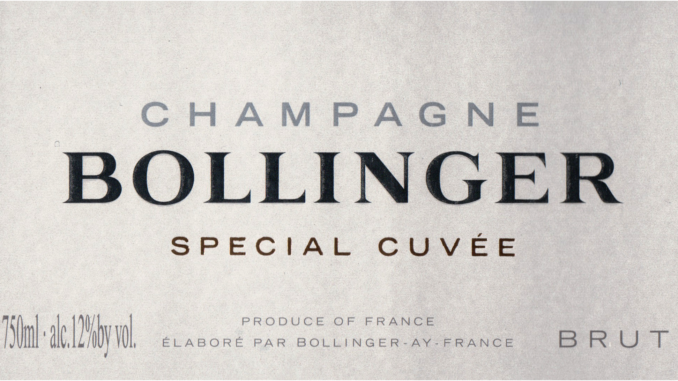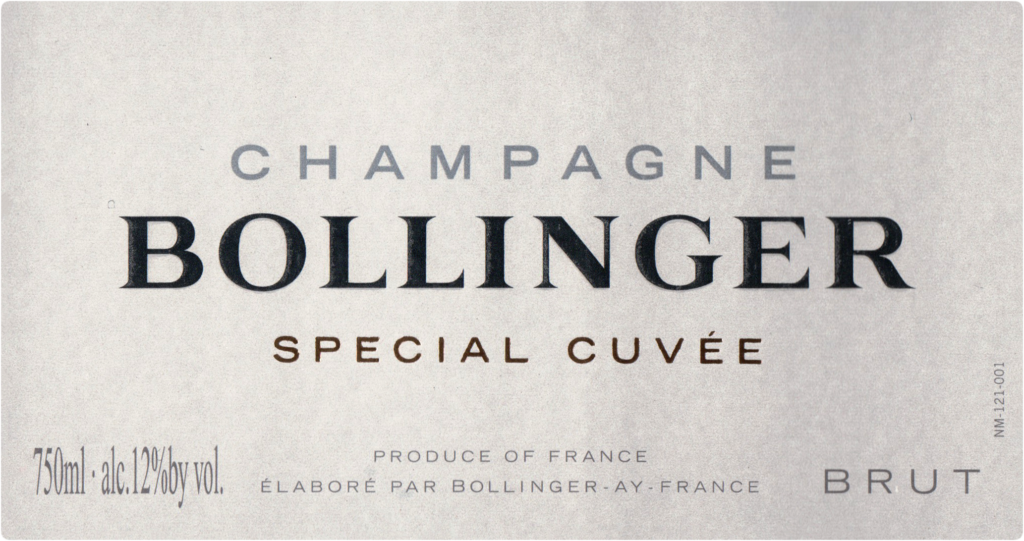
In my experience, Bollinger is one of the most polarising champagne’s I’ve come across. People either erupt into displays of overwhelming joy or look at me like they’ve been sucking on a lemon. To be honest, I used to fall into the latter.

My experiences were largely oxidised ones; flavours were overly yeasty, caramel, subdued acidity, and overly-ripe fruit. Bottles often seemed stale. It was difficult to know if it was the intended style, or an unfortunate by-product of its style.
Bollinger is produced using oxidative (but not oxidised) processes. There is a good description of what this means from The Wine Doctor:
“A taste of Bollinger can be hugely instructive in aiding differentiation between ‘oxidative’, where a wine has been made in a fashion which allows oxygen to influence the style of the wine, and oxidised, where the aromatic profile of the wine has succumbed to the aldehydes created by the oxidation of ethanol by reactive oxygen derivatives in the wine such as peroxide. Advocates of exhausted wines in the latter group often sloppily, erroneously and misleadingly label them as ‘oxidative’.”
When it comes to Bollinger’s Special Cuvée Non-Vintage, its oxidative style is a result of 25 percent of the cuvée being exposed in a controlled way to oxygen during barrel fermentation. And during second fermentation in the bottle, Bollinger use a cork instead of a crown cap to allow controlled exchange of oxygen.
Read more in the book “Champagne [Boxed Book & Map Set]: The Essential Guide to the Wines, Producers, and Terroirs of the Iconic Region“
Because of its oxidative style, it is exposed to more risks than most other champagnes. It can also manifest in a more oxidised style with age, depending on how it has been handled through transportation and storage.
Unfortunately what I tasted early on in my champagne learning journey was oxidised and not oxidative champagne. My sneaky suspicion is that the bottles I had were actually grey imports. I have blogged my thoughts on these and related topics so please refer back for more information.
Bollinger redeemed itself for me when I purchased a bottle of the very latest release of its Special Cuvée Non-Vintage from Champagne Gallery. In true grand Bollinger style, it was released at the London International Wine Fair in May but with a significant ‘wow’ factor – a new bottle shaped in the style of a magnum. The new bottle shape is thanks to an old bottle from 1846 discovered deep in their underground cellars. Bollinger claim that the ratio of the neck diameter to the base diameter will slightly slow down the oxygen exchange and therefore improve the quality of champagne. Its new distinctive bottle shape is also very handy when choosing the freshest bottle on our shelves (for now).
So with all that said, what should you really expect from Bollinger? The house style prides itself on being full-bodied, very dry, toasty, biscuity and ‘winey’ – in other words, a sense of warming alcohol. They are also well-aged. So you should expect a very complex and rich champagne experience, yet fresh. Certainly from a non-vintage point of view, you won’t find any other on the market as complex as the Special Cuvée.
There are many elements that contribute to this complexity. This includes:
- Using grapes from around 120 different parcels of land across 30 crus from the Vallée de la Marne, around 80 percent of which are of Grand Cru and Premier Cru quality
- Using around 10 percent of reserve wines (wines that have been put aside, specially, from many vintages) that have been aged for up to 15 years
- Ageing for three-four years before release
- Fermenting 25 percent of the wines in oak barrels and then on cork during the second fermentation.
This magical and somewhat mysterious concoction must be painstakingly difficult to manage and achieve year-by-year. Yet Bollinger do it so very well. For sure, the new release of Bollinger Special Cuvée Non-Vintage takes pride of place in my top three non-vintage champagnes.
My tasting notes follow:
Blend – Pinot noir (60%), chardonnay (25%), and pinot meunier (15%). A very low dosage of seven to nine grams per litre has been used.
Glass – Crystal clear medium lemon with a fine, persistent bead and good mousse.
Nose – Delightfully expressive, the nose opens out nicely with mouth-watering lemon meringue, honey-suckle and a creamy, yeasty complex.
Palate – There is so much going on at once that its hard to get my thoughts together. The first thing I notice is its freshness, richness and liveliness on the palate. It’s so mouth-watering and delicious, making me salivate for more! Dry with medium-high acidity, the cuvée is full-bodied but not in a heavy way. The fresh fruit flavours of lemon sorbet, white fruit and something green (not sure what) are very lifting. Notes of toasted almonds, brioche and oak give it complexity. There is also a very slight saltiness to it but perhaps this is related to minerality. It leaves a wonderful silky lining to my mouth and a very long, creamy finish. Absolutely delightful.
Verdict – 7.5/10
